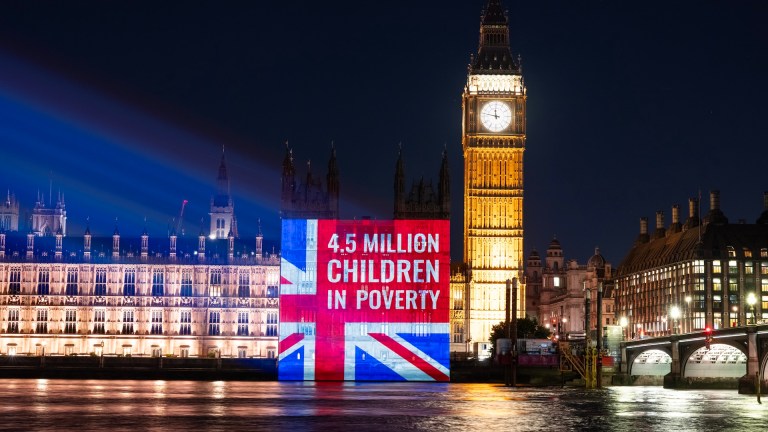“The evidence is clear that people with certain impairments will be affected disproportionately more by the proposed cuts,” said Svetlana Kotova, director of campaigns and justice at Inclusion London. “There is no evidence that they face fewer barriers of lower extra costs of being disabled. This just shows again that the reforms are only about meeting arbitrary fiscal targets at the expense of pushing disabled people into poverty.
We are calling on MPs to listen to disabled people and vote against the bill. The lack of consultation and the speed at which these reforms are pushed through means that only MPs can stand up for our rights and stop the misery and injustice that the cuts to PIP will inflict.”
Read more:
Mark Harrison of Disabled People Against Cuts (DPAC) said: “These figures just demonstrate that this isn’t about getting people into work. This is about saving money at the expense of people, many of whom have worked all their lives and now are unable to work because of acquired disability through their life course, through injuries at work.
“They need to withdraw the proposals and co-produce policies that will remove the structural barriers to employment for disabled people. And disabled people are the experts about that. All the research shows that disabled people want to work, and it’s the structural barriers that are preventing disabled people working.”
Previous FOI disclosures showed the overarching ‘groups’ of illnesses and disabilities that are at most risk from Labour’s planned cuts, but this new dataset gives much greater detail about the impact on people with specific conditions.
Advertising helps fund Big Issue’s mission to end poverty
How will the new ‘four point rule’ work?
The PIP daily living award is based on daily needs such as washing, dressing and going to the toilet. It can be paid at either the standard rate or the higher enhanced rate, to people in or out of work, depending on how severely disabled someone is according to the PIP assessment.
The assessment ‘scores’ applicants based on set criteria across different activities – for example, can they wash themselves unaided, do they need assistance, or are they unable to wash themselves at all? The greater the level of need, the higher the score for that activity.
At present, applicants must score at least eight points across all daily living categories to qualify for the standard payment, and 12 points for the enhanced payment. This total can be reached through any combination of scores in individual activities – such as two-point scores in four categories to give an eight-point total.
But under the government’s plans, applicants must score at least four points in any one category as well as reaching the eight-point (or 12-point) overall threshold – failure to do so would mean they wouldn’t qualify for the daily living payment no matter how high their total score.
If passed by MPs, this would affect new applicants from November 2026, and existing working age claimants whenever their claim is reviewed after that date.
Further down the line, the government also wants to use this test to decide who gets the means-tested universal credit health-related payment – meaning those who fail to meet this ‘four-point rule’ would no longer qualify for any of the main disability benefits.
Advertising helps fund Big Issue’s mission to end poverty
Who could lose out on support from the DWP if the disability benefit cuts go ahead?
The DWP data supplied to Big Issue shows how many working age ‘daily living’ PIP claimants in England and Wales with each specific disability or illness, at standard and enhanced rate respectively, scored below four points in each daily living category at their last PIP assessment – putting them at risk of losing their daily living payment under the four-point rule.
The DWP data also shows what percentage of the overall standard and enhanced caseloads for each disability had scored below this four-point threshold.
From this, Big Issue has calculated what percentage of all working age daily living claimants with each disability – standard rate or enhanced rate – are at risk from the planned cuts.
These are among the disabilities that are potentially most affected by the four-point rule – in all these cases, around 95% of claimants specifically on the standard daily living rate are at risk from the cuts:
Previous figures showed 87% of people receiving the standard allowance of the PIP daily living award were at risk of losing their benefits under the planned cuts, as well as 13% of those on the enhanced allowance.
The new DWP data reinforces that the impact of the cuts is most heavily, though not solely, felt by those on the standard allowance. Across all 399 individual conditions for which the DWP provided data, the average ‘at risk’ rate is 82% – and is below 50% for just 25 of the 399 conditions. The difference between individual disabilities is often driven by whether their PIP caseload is skewed towards the standard allowance or enhanced allowance.
Advertising helps fund Big Issue’s mission to end poverty
“PIP is hard to get and people receiving even just the standard rate face significant barriers to basic activities, like cooking, washing and interacting with others,” said Inclusion London’s Kotova. “They have already gone through a gruelling process to be assessed.”
Between 50% and 70% of current claimants with the following conditions scored below four points in all daily living categories:
These figures reflect the heavy impact the four-point rule could have on heart problems and depression. The next table shows disabilities and illnesses where large minorities of claimants are at risk, including liver failure, amputees and certain types of cancer.
While the ‘at risk’ rate for strokes is one-in-three, those with a cognitive disorder resulting from a stroke are categorised separately, with 14% of them scoring sub-four in all areas.
Additionally, progressive conditions such as Parkinson’s disease and multiple sclerosis tend to get worse over time, so many existing claimants who scored sub-four in all areas at their last assessment could well meet the planned tighter criteria when they are next assessed in years to come.
However, the percentages shown above reflect how much harder it will become for first-time applicants with newly diagnosed multiple sclerosis or Parkinson’s disease to qualify for PIP in future – some who would qualify under the current rules would fail under the new rules. The overall PIP caseload for these conditions would therefore shrink, even in the absence of any fall in the number of people affected by them.
Advertising helps fund Big Issue’s mission to end poverty
While conditions such as schizophrenia, muscular dystrophy and certain forms of cerebral palsy are not among the worst affected, even then around a quarter of the current caseload are potentially exposed to the four-point rule:
The disabilities and conditions least affected by the cuts include autism, loss of hearing or sight, ‘global’ learning disabilities such as Down’s syndrome, paraplegia, Huntington’s disease, motor neurone disease and quadriplegic cerebral palsy. In all these cases, less than 15% of current working age claimants are at risk from the four-point rule – 1% in the case of quadriplegic cerebral palsy.
If the government’s plans to use the PIP assessment to determine who gets universal credit’s disability payments go through – which won’t be voted on until later this year at the earliest, and wouldn’t take effect until towards the end of the decade – then those missing out on PIP would miss out on any of the main working age disability benefits, and could find themselves subjected to the DWP’s work search requirements and sanctions regime.
“I’m as worried about universal credit being restricted, particularly for young people and young care leavers, as I am for the people that are going to lose PIP,” said DPAC’s Harrison. “And we know that what will result is greater suffering, greater poverty and unnecessary deaths.”
Will all these claimants lose their disability benefits?
Not everyone who scored below four points in all daily living categories at their last assessment will lose out under the four-point rule. Some claimants will pass retirement age before the plans are implemented, meaning they will no longer face scheduled full reassessments.
As mentioned above, other claimants will find their condition worsens before their next reassessment, meaning that next time out they will hit four points in a daily living category and keep their PIP claim.
Advertising helps fund Big Issue’s mission to end poverty
There are also purported “behavioural effects” resulting from the rule change, whereby claimants and even benefits assessors may adjust their actions in ways that mean more people than might be expected keep their PIP payments at their next reassessment.
These behavioural effects might include claimants tailoring their submissions and evidence to boost their chances of meeting the four-point threshold – although this might require professional benefits advice that is not easy to come by.
It could also see claimants being more willing to formally appeal against DWP decisions to terminate their benefits – although this would add more demand on an already overstretched and delayed appeals system.
The DWP estimates that these combined factors will reduce the number of existing claimants who ultimately lose their PIP daily living award from the roughly 1.3 million claimants who currently scored sub-four in all areas, to 440,000 over the course of ten years.
This is based on forecasts by the independent Office for Budget Responsibility (OBR). But the OBR itself admits great uncertainty around these forecasts, and critics argue behavioural changes will do less to mitigate the impact of the cuts than the DWP claims.
In any case, the stress placed on existing claimants sitting below the new four-point threshold in the meantime would be real, whether they ultimately hold onto their PIP payments or not.
Advertising helps fund Big Issue’s mission to end poverty
The DWP’s response
For some disabilities, Big Issue has used publicly available figures from the DWP’s Stat-Xplore data website for two purposes:
- to fill in total caseload figures where the DWP’s FOI response didn’t provide an indication of them for data protection reasons
- and to add in ‘end of life’ cases – which are protected from the cuts, and which the DWP excluded from its FOI figures – to the total caseloads.
Big Issue has not added anything to the DWP’s FOI figures showing ‘at risk’, sub-four-point cases. The only additions, based on DWP figures from Stat-Xplore, are to the overall PIP daily living caseloads for some disabilities. Doing this slightly reduces – rather than increases – the percentage of claimants reported by Big Issue as being at risk from the planned PIP cuts.
A DWP spokesperson said: “It would be wholly inaccurate to use these figures in an attempt to predict how people with different conditions would be affected by changes to PIP.
“There are, for example, likely to be significant behavioural responses that will differ according to people’s health conditions – and the majority of claimants report more than one, often several, health conditions.
“We are determined to create a welfare system – backed by dedicated employment support – that will help people into work and out of poverty while always protecting those who will never be able to work.”
Promises are easy to break. Sign Big Issue’s petition for a Poverty Zero law and help us make tackling poverty a legal requirement, not just a policy priority.
Advertising helps fund Big Issue’s mission to end poverty
Do you have a story to tell or opinions to share about this? Get in touch and tell us more. Big Issue exists to give homeless and marginalised people the opportunity to earn an income. To support our work buy a copy of the magazine or get the app from the App Store or Google Play.






